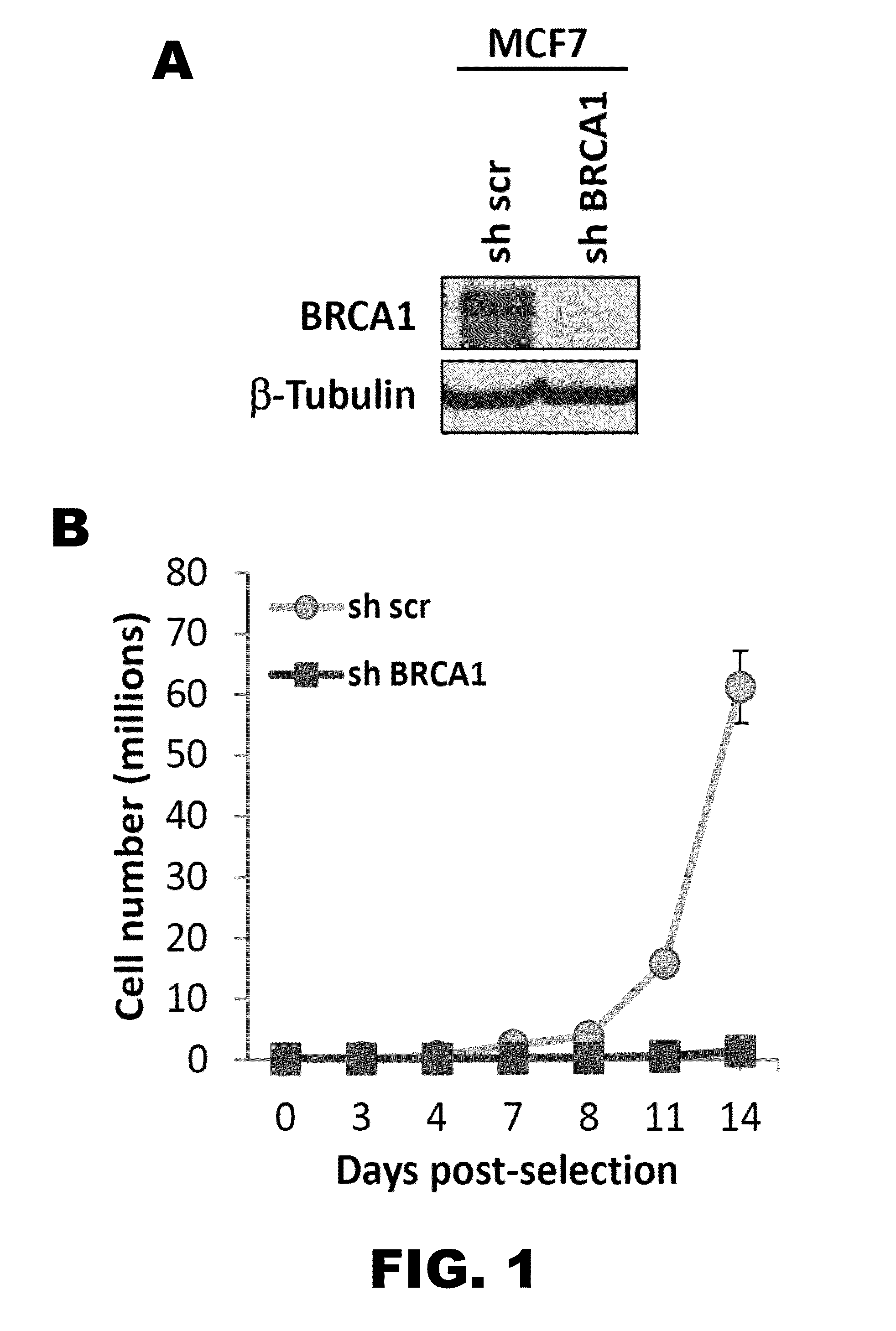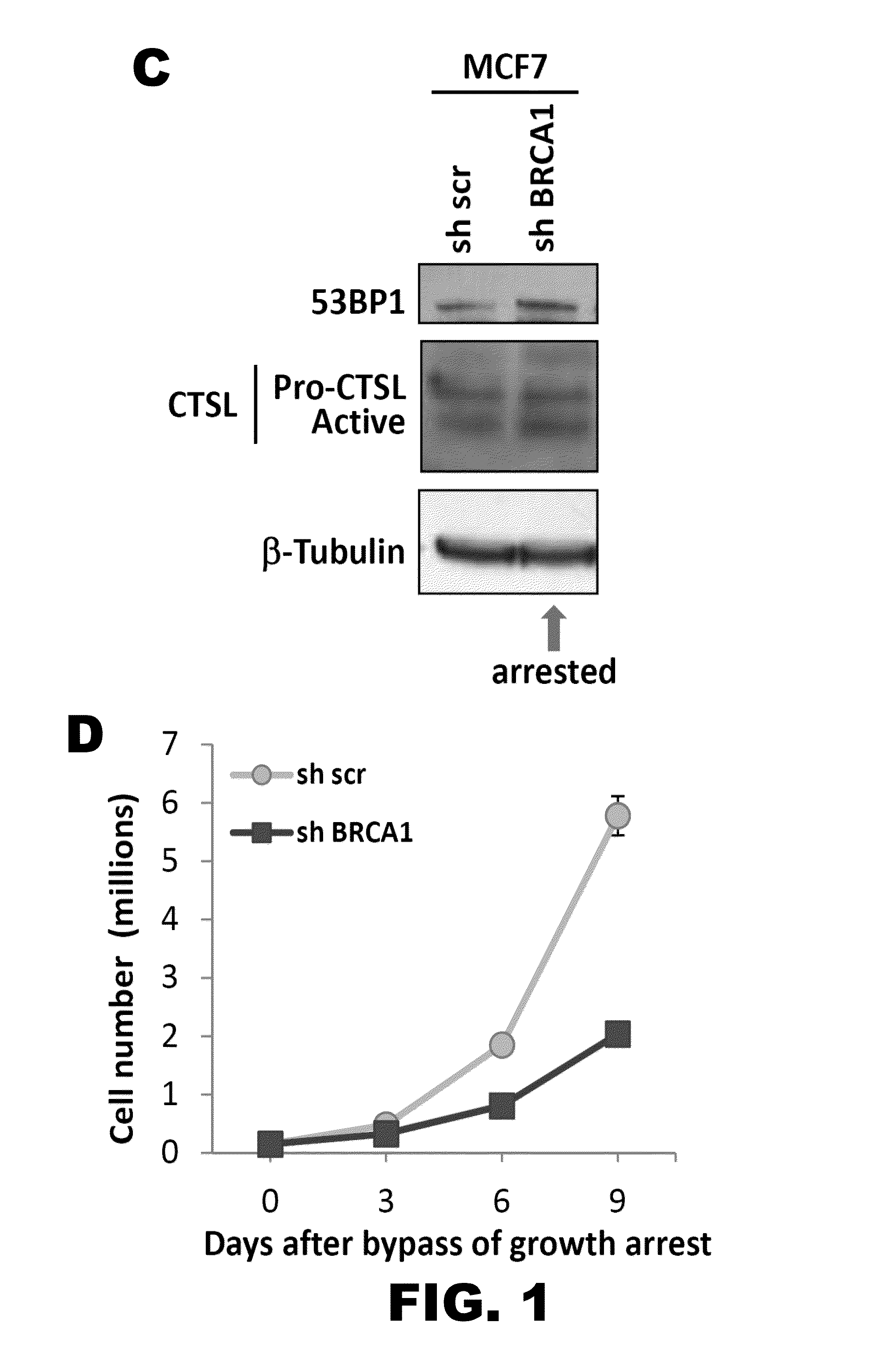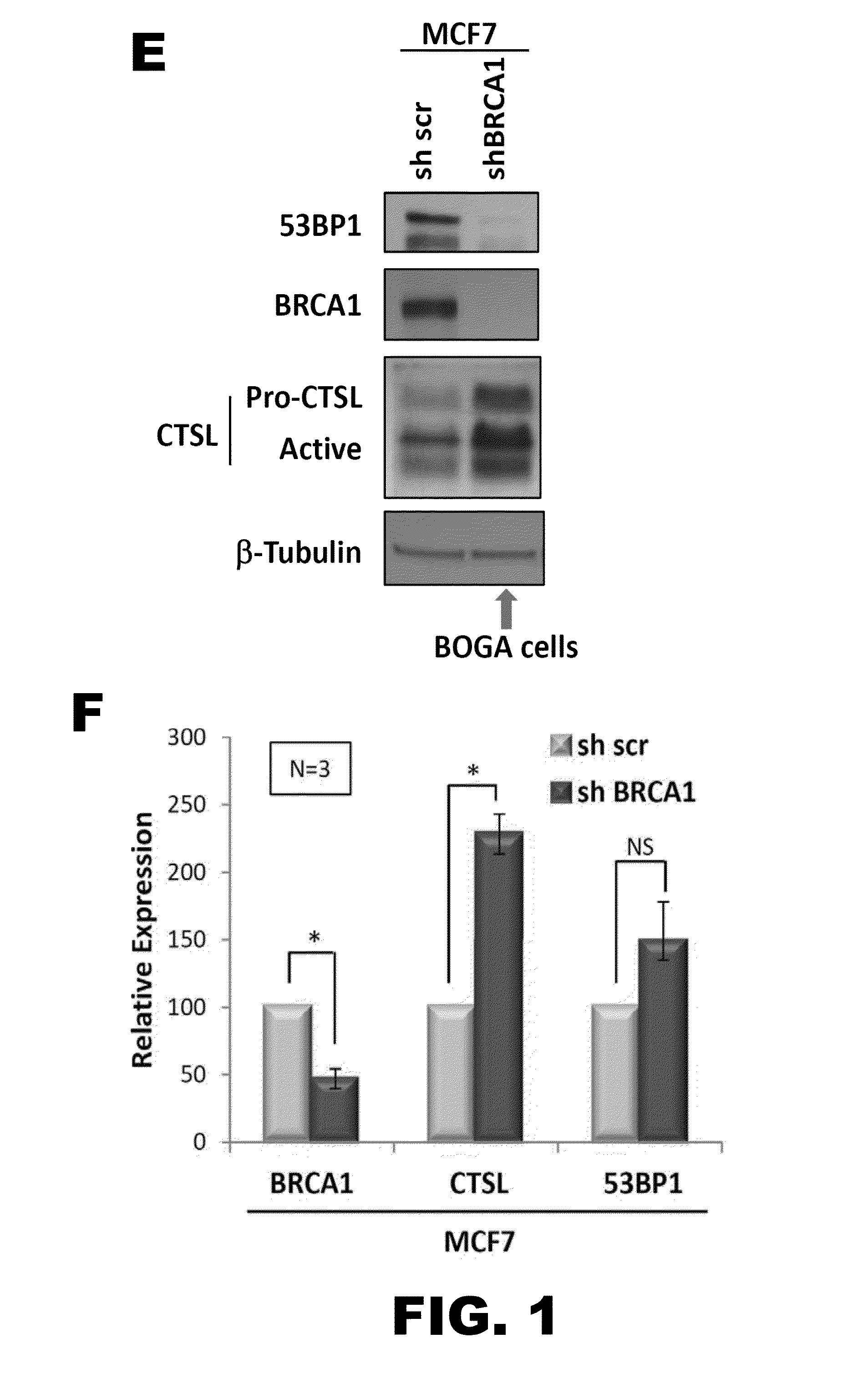Method of identifying triple negative breast cancer
a breast cancer and triple negative technology, applied in the field of triple negative breast cancer, can solve the problems of not all tumors in these categories respond in the same manner, patients with basal-like cancers are unlikely to benefit from currently available targeted systemic therapy, and their ability to capture, so as to increase the sensitivity of tumor cells
- Summary
- Abstract
- Description
- Claims
- Application Information
AI Technical Summary
Benefits of technology
Problems solved by technology
Method used
Image
Examples
example 1
BRCA1 Depletion Leads to Upregulation of CTSL and Degradation of 53BP1
[0110]Previous studies revealed an important role for the cysteine protease CTSL in regulating the levels of 53BP1 protein in fibroblasts (Gonzalez-Suarez et al., 2011; Redwood et al., 2011). Given the recent association between BRCA1 loss of function and decreased levels of 53BP1 in breast tumor cells, it was investigated whether these two processes are functionally related. In particular, it was determined whether CTSL is one of the factors contributing to 53BP1 loss in BRCA1-deficient cells. The breast cancer cell line MCF7, which is proficient in both BRCA1 and 53BP1, was lentivirally transduced with a shRNA specific for depletion of BRCA1 or a shRNA control (FIG. 1A). Depletion of BRCA1 induced an initial growth arrest in MCF7 cells while control cells continued growing exponentially (FIG. 1B). Moreover, growth arrested BRCA1-deficient cells did not show differences in the levels of 53BP1 or CTSL proteins whe...
example 2
CTSL is Responsible for Degradation of 53BP1 Following Depletion of BRCA1
[0112]To test if CTSL is responsible for the degradation of 53BP1, acute depletion of CTSL was performed in control and BOGA cells (FIG. 3). The decrease in CTSL transcripts levels in both cell lines upon lentiviral transduction with a specific shRNA is shown in FIG. 2B. Good depletion of CTSL protein levels was achieved in control and BOGA cells (FIG. 2A). Intriguingly, a slight increase in BRCA1 protein levels in BOGA cells depleted of CTSL was observed, suggesting a putative feedback mechanism of CTSL on BRCA1 protein levels. Importantly, depletion of CTSL stabilized 53BP1 protein levels in BOGA cells mirroring those of control cells (FIG. 2B). As a control, it is shown that transcripts levels of BRCA1 are not affected by depletion of CTSL (FIG. 2C). These data indicate that cells that bypass the growth arrest imposed by the loss of BRCA1 activate CTSL-mediated degradation of 53BP1.
[0113]Previous studies dem...
example 3
CTSL-Mediated Degradation of 53BP1 Rescues HR Defects in BRCA1-Deficient Cells
[0114]CTSL-mediated degradation of 53BP1 rescues HR defects in BRCA1-deficient cells The role of BRCA1 in the maintenance of homology-mediated repair has been clearly demonstrated (Moynahan et al., 1999; Moynahan et al., 2001; Scully et al., 1997; Scully et al., 1996; Snouwaert et al., 1999; Westermark et al., 2003). In particular, BRCA1 promotes end-resection by CtIP and the MRN complex at DSBs, an event required for efficient HR. Thus, BRCA1-deficiency impairs the localization of RAD51 protein at DSBs following ionizing radiation (IR) treatment. Interestingly, recent studies demonstrated that loss of 53BP1 in BRCA1-deficient cells partially rescues HR and thus the localization of RAD51 at IR-induced foci (IRIF) (Bunting et al., 2010). Based on these data, it was tested whether CTSL-mediated degradation of 53BP1 in BOGA cells might inhibit 53BP1 foci formation and promote DNA DSBs repair by HR. Also teste...
PUM
| Property | Measurement | Unit |
|---|---|---|
| Sensitivity | aaaaa | aaaaa |
Abstract
Description
Claims
Application Information
 Login to View More
Login to View More - R&D
- Intellectual Property
- Life Sciences
- Materials
- Tech Scout
- Unparalleled Data Quality
- Higher Quality Content
- 60% Fewer Hallucinations
Browse by: Latest US Patents, China's latest patents, Technical Efficacy Thesaurus, Application Domain, Technology Topic, Popular Technical Reports.
© 2025 PatSnap. All rights reserved.Legal|Privacy policy|Modern Slavery Act Transparency Statement|Sitemap|About US| Contact US: help@patsnap.com



